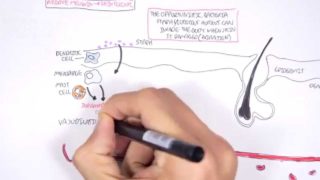Dr. Timothy Jochen Explains Alopecia Causes and Treatments
Causes of hair loss and how to prevent and treat it: Hair loss or commonly used term “baldness” is a common clinical complaint that is a manifestation of a wide variety of disorders. Although the cause of hair loss is easily diagnosed in some cases, such as in patients who present with classic male pattern […]
Dr. Timothy Jochen Explains Alopecia Causes and Treatments
Other Videos You Might Like:
Subscribe
Login
115 Comments
Newest





